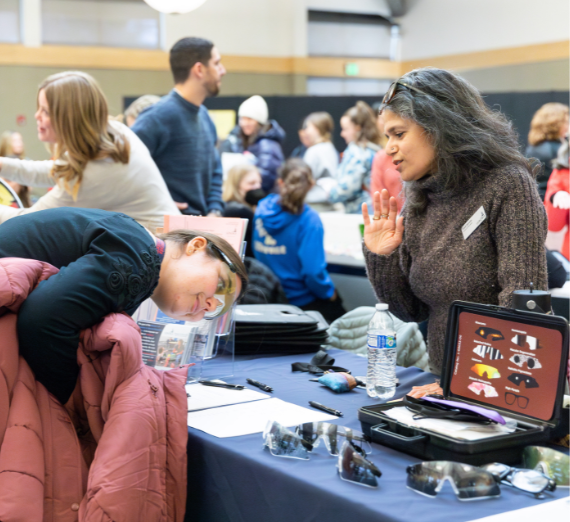The Law that Transformed Disability Education

In 1975, Public Law (PL) 94-142 – also known as the Education for All Handicapped Children Act – changed everything for the nearly 2 million American children with disabilities who had historically been barred from attending public schools.
It disallowed states from continuing to choose who could go to school and who couldn’t and instead mandated that all children, regardless of disability, should have a free appropriate public education. In addition, the act guaranteed a child’s right to attend as many regular education classes as possible, and marked the beginning of individualized education programs.
“If kids are identified with a disability, but are being denied access, then parents and other individuals can challenge them on it,” said Kimberly Weber, professor and department chair of Special Education. “Schools have to give you something for your child to learn.”
Since its enactment, PL 94-142 has seen many additions. In 1990, it was reauthorized and renamed the Individuals with Disabilities Education Act (IDEA). Notably, it charged schools with the task of creating transition plans by the time students turned 16.
Individual Education Plans (IEPs) would delineate goals and strategies to prepare students for independent living and potential employment. In 2004, IDEA was reauthorized to allow early intervening services for children who need additional academic and behavioral support and called for improved educational outcomes. And in 2016, lawmakers introduced an Equity in IDEA regulation, ensuring that children with disabilities are properly identified, and that children of certain racial minorities are not over-identified due to racial or ethnic bias. But still, according to Weber, there is work to be done.
Gonzaga Teacher Education students, she added, are often in these classrooms assisting these students even before they begin student teaching.
In honor of PL 94-142’s 50th anniversary, Gonzaga’s Department of Special Education hosted its first Zags for Abilities Fair, which brought local organizations together to deepen students’ understandings of disability inclusion and advocacy. Students learned about learning disabilities, disability legislation, and physical disabilities and inclusion in sports.
Weber plans to continue Gonzaga’s tradition of advocating for radical inclusion of people with disabilities.
It disallowed states from continuing to choose who could go to school and who couldn’t and instead mandated that all children, regardless of disability, should have a free appropriate public education. In addition, the act guaranteed a child’s right to attend as many regular education classes as possible, and marked the beginning of individualized education programs.
“If kids are identified with a disability, but are being denied access, then parents and other individuals can challenge them on it,” said Kimberly Weber, professor and department chair of Special Education. “Schools have to give you something for your child to learn.”
Since its enactment, PL 94-142 has seen many additions. In 1990, it was reauthorized and renamed the Individuals with Disabilities Education Act (IDEA). Notably, it charged schools with the task of creating transition plans by the time students turned 16.
Individual Education Plans (IEPs) would delineate goals and strategies to prepare students for independent living and potential employment. In 2004, IDEA was reauthorized to allow early intervening services for children who need additional academic and behavioral support and called for improved educational outcomes. And in 2016, lawmakers introduced an Equity in IDEA regulation, ensuring that children with disabilities are properly identified, and that children of certain racial minorities are not over-identified due to racial or ethnic bias. But still, according to Weber, there is work to be done.
“In some places, kids aren’t included, and in others, they are included when it is their best interest not to be,” she said. “And we need more people around them. Some kids may not be able to be supported, because schools don’t have the supports in place to make sure those kids do well in those environments.”
Gonzaga Teacher Education students, she added, are often in these classrooms assisting these students even before they begin student teaching.
In honor of PL 94-142’s 50th anniversary, Gonzaga’s Department of Special Education hosted its first Zags for Abilities Fair, which brought local organizations together to deepen students’ understandings of disability inclusion and advocacy. Students learned about learning disabilities, disability legislation, and physical disabilities and inclusion in sports.
Weber plans to continue Gonzaga’s tradition of advocating for radical inclusion of people with disabilities.
